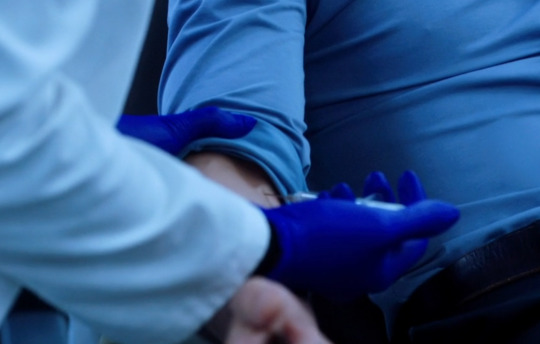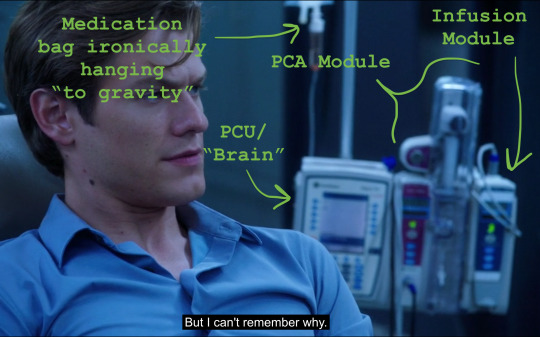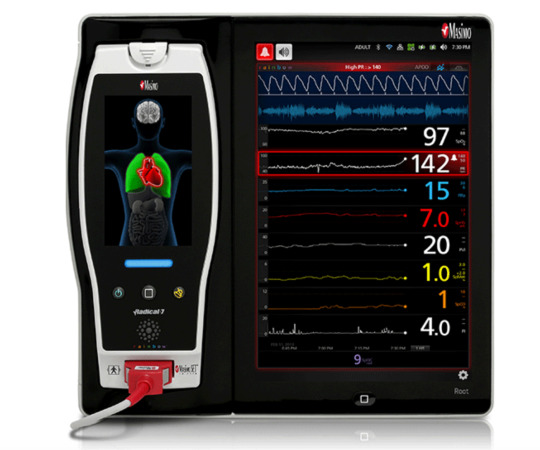#the mole they removed ive literally had since birth it's not new its just a big ugly birth mark
Text
Not to completely change the subject but I'm getting the stitches removed from another mole extraction for, haha and get this, get that Womp Womp noise machine ready!!
Potentially mmoooorrreeeeee skin c*ncerrrrrrrrr. Ahahahaaaaaaaahhhh
Anyway getting them cut off in 7ish hours, and to no one's surprised I'm too stressed out to sleep
Got an email earlier today that the results of the testing are in, so at least that can get over with too (originally they had said it was gonna be a 12~14 day wait, but the stitches would be removed in 10 days)
#i am going in.. optimistic about this one;;;#the mole they removed ive literally had since birth it's not new its just a big ugly birth mark#i told him that but the guy was legit losing his mind saying it looked really bad + the shape was bad + the size was bad + the color was ba#FIRST OF ALL DO U KNOW HOW SHITTY THAT FEELS HAVING SOMEONE STARE U DOWN IN UNDERWEAR JUST SAYING SOMETHING ABOUT U LOOKS SO INCREDIBLY BAD#LIKE GIRL LMAOOOOO 💀💀💀💀💀💀💀💀💀💀💀💀💀💀💀#i laugh cos if i dont ill start ripping my hair out!!!!!!!#ANYWAY yea im choosing to stay optimistic about this one😭😭😭#lizmet
31 notes
·
View notes
Text
Soup: a “Tesla + Bell + Edison + Mac” Medical Review
“You have a perfectly functional syringe pump with the PCA in the background, and you’re going to give him an injection with a metal needle? Also, if you’re gonna sedate him you might as well use the IV pump too??? Like, you have a whole ‘nother channel?? Most floor nurses would kill for that setup?” <--- From my notes on this ep.*
Awl - X-Ray + Penny - Duct Tape + Jack - CD + Hoagie Foil - Guts + Fuel + Hope - Wilderness + Training + Survival - Father + Bride + Betrayal - Lidar + Rogues + Duty - Nightmares - Seeds + Permafrost + Feather - Friends + Enemies + Border - Mason + Cable + Choices - Bitter Harvest - Kid + Plane + Cable + Truck -

In case you didn’t see it, the story went like this: After being knocked unconscious trying to prevent Codex from stealing an encoded map to a Tesla-era WMD, Mac wakes to find he’s lost certain memories of the event that are crucial to interpreting the weapon’s location. In order to recover the memories and stop Codex from getting there first, Matty calls on a friend at DARPA who studies experimental memory-recovery drugs. Drugged, Mac enters a dream state to track down the memories, where he encounters his mother, a man he recently chose to kill to save everyone in LA, his high-school bully, and a darker version of himself who thinks Codex’s directive to kill an eighth of the population to save the world might not be too far off the mark.
So there’s a lot to talk about here medically. For this post, I’ll go into the concussion and its aftermath, the drug and it’s administration, and the medical technology that the Phoenix infirmary seems to have at its disposal.
The Concussion/Amnesia:
Mac is knocked out by a blow to the head. He wakes up “a few hours” later in the Phoenix infirmary. I’ve talked about concussions before (see here, here, and here), so I’m not going to go into too much detail about them in this post, but essentially if someone’s out for that long, they’re in trouble.

It’s reasonably common to lose consciousness in a concussion, but it’s usually only for seconds to minutes, and if it occurs at all, that person needs prompt medical evaluation in an emergency room. Even if there ends up being no major complications, like bleeding in the brain or an increase in pressure in the skull, the recovery time for concussions with a loss of consciousness can be in the weeks or months range. Someone who’s out for “hours” is looking at a stay in a neuro ICU and probably severe and possibly permanent brain damage. Like, it’s a season-long arc at least.
Since we’re not seeing that level of medical need, I think it would probably be safe to assume that Mac wasn’t actually out for “hours” as stated. He could have been briefly unconscious, as shown in the house attack scene, but then had trouble forming memories after that, which caused him to not remember the ride back to Phoenix very well, if at all. These are still concerning enough symptoms that I would have taken him to an emergency department instead of to the infirmary, but at least with that scenario there’s a possibility what happened to him isn’t actively life threatening outside of a neuro ICU.
Unlike the extended period of unconsciousness, the portrayal of amnesia isn’t far off the mark for once. The amnesia that Mac suffers is actually pretty reasonable- trouble remembering the incident and the events just before it is common in head injuries, as is having trouble forming new memories after. Not only is accurate amnesia something that I didn’t expect out of Rob Pearlstein (writer of the infamous Guts + Fuel + Hope), but it’s something that fiction as a whole (including, I’ll admit, 1985 MacGyver**) tends to struggle with. So kudos for that specific part of this episode, Pearlstein.
The Drug:

Even if we assume Mac wasn’t unconscious that whole time, the brief unconsciousness and memory problems indicate that he still had a pretty significant concussion that needed medical care and monitoring. I’m guessing that as advanced as the Phoenix Infirmary is, it doesn’t have the capacity to do neurosurgery or intracranial pressure monitoring. That means the Phoenix medical team’s priority in this situation would essentially be to catch any major, life-threatening complication as early as possible, and if one happened, get Mac to a hospital quickly enough to save him.
The best and lowest-tech tool they have to this end is repeated mental status exams. Mental status exams have the patient answer a series of questions like “what’s your name?” “what day is it?” “where are you right now?” “what happened to you/why am I asking you these questions?” followed up with a series of mental tasks like counting backwards from 100 by 7s or making a logical decision based on a given scenario. If Mac’s answers significantly change, from one assessment to the next, that could mean he’s in trouble.
Because these assessments rely so heavily on Mac’s ability to answer questions and perform tasks accurately, and they’re really the only thing that’s going to catch a serious problem early enough to save Mac’s life, the last thing you’d want to do is give him a drug cocktail that would alter his perception of where he is and what’s going on around him. I’ll just… leave that there.
But let’s assume that for some reason they have a non-CT way of assessing whether Mac’s about to die from a brain bleed while in a drug-induced dream state (they do appear to have limited EEG capability- can anyone tell me if this would still be helpful in the context of the drugs?). I’m not going to talk too much about the drug cocktail itself, since it was stated as fictional (so, essentially, anything they say it does it can probably do), but since they do reference it as containing DMT, I invite you to check out the erowid experience vault for DMT for stories of other people’s experiences with it.
I will, however, talk a little about the administration of the drug. In the episode, a syringe with a needle is used to deliver the medication. Though not explicitly shown, I assume Dr. Cheryl inserted the metal needle into one of Mac’s arm veins and injected the drug.
Something that fiction generally doesn’t understand is that inserting a metal needle into a vein in order to administer medication doesn’t happen in a medical setting. Ever. The ONLY way to administer a medication IV in a medical setting is through an IV cannula- a short, flexible plastic tube inserted into a vein, often just colloquially called an “IV”:

If Mac had one of these ^^^, the syringe could attach to one of the blue and white pieces and the medication could be injected without worrying that the needle could slip out of the vein (many IV medications must be injected slowly over several minutes, and that’s a long time to hold a needle still).
Before Dr. Cheryl gives him the drug, she takes his vitals and asks him some questions, namely whether he has ever had “a psychotic break”, then, without explaining further, asks if he thinks he will become violent.
Now, it does make sense to ask someone about their psych history when administering a drug known to have psych side effects, because those can be a lot worse or more likely for people with certain psych histories. Think about SSRIs and SNRIs- they’re good antidepressants, but when given to someone with bipolar disorder, they can greatly increase the risk of a manic episode, and that possibility has to be evaluated before the drug is prescribed.
The conversation should have started with Dr. Cheryl asking everyone else to leave the room. Asking if someone has ever experienced psychosis in front of their coworkers, is not only a serious breach of patient privacy, but could also be incredibly dangerous. If Mac had experienced psychosis, but didn’t want his coworkers to know, he’d either have to lie and risk side effects without being able to prepare, or feel pressured to release that medical information and possibly risk his job or reputation***.
Then she’d ask something to the effect of “have you ever been diagnosed with a mental illness, been hospitalized for a mental health reason, or do you take any medications for a mental health problem?” And if the answer to that question was anything that would make the drug particularly dangerous to him, she’d probably tell him the risks and her assessment that it was a bad idea to proceed.
If there was no other option for some reason (I’d argue not the case in this situation), she’d tell him what the risks were, and only then would she possibly have to ask if he knew he might become aggressive, at which point they’d come up with how he’d like her to handle that possibility.
I know it’s not quite as snappy, but I would have really liked to see it.
Plus, unless it’s been asked off screen, Dr. Cheryl hasn’t asked him if he has any other health problems, if he takes any medications, or if he has any allergies, all of which could significantly impact how safe this drug could be for Mac.
Phoenix Infirmary Medical Tech
Now let’s look at some of the bits and pieces in the background of the episode. Particularly, I wanna talk about that chair, the IV pump, and the monitor.

So, chair first- it’s a dentist’s chair. It’s good for dental things and maybe some minor procedures (we have a slightly different chair in a doctor’s office I work at- we use it for things like implanting birth control, removing warts and moles, and providing wound care), but it’s not great for anything else. It’s especially not great if you have to sit there longer than a half hour. Considering we know from previous episodes that they have a full-on hospital bed somewhere at their disposal and possibly a couple of carts (narrower beds you see in the emergency department), I gotta say it makes literally no sense to put the guy who’s unconscious from a head injury in the procedure chair.
Next, the IV pump
We talked above about administering medications “IV push”- a medication “pushed” through an IV by a syringe, one dose at a time. Another way to give IV medication or fluids is via an IV drip or “piggyback”- the medication is diluted in a bag of saline or other IV fluid, and set to continuously run into a person’s IV. These are nice for doses of IV medication that have a lot of volume (like IV antibiotics) medication that wears off quickly and may need constant adjustment (like some kinds of sedation or some types of pain medication or medications that counteract shock), or just straight up IV fluids.

IV pumps control how fast the medication or fluid goes from the bag into the person. You can vaguely control this without a pump using gravity, a drip chamber, and a roller clamp, but if you need to know precisely how many milliliters of medication/fluid per hour is getting into a person, and you didn’t start your nursing career in the 1970s, you need a pump.
The one pictured above specifically consists of a central computer box (colloquially called a “brain”) where the pump rate can be programmed, flanked by interchangeable modules that each do a slightly different thing. The modules on the pump in the episode include an infusion pump, which essentially just pumps fluid from a bag hanging above it into a person, and a PCA pump. A PCA pump holds a syringe of medication (usually pain medication) and delivers a dose of it when the patient presses a button.
Honestly I think the whole things is just chillin’ in the background making the room look medical-y, but they really could have used it to continuously administer the drug or the sedation if they’d really wanted to incorporate it.
Side note, the modules are actually kind of heavy, so you have to balance them a little or the whole thing kinda tilts (see the screenshot from the episode). Also, for some reason if you stick an infusion module on the same side as a PCA module, the brain won’t recognize it half the time. Not sure if it’s a feature or a bug. Below is how someone who has ever once used one of these things would have set it up:

The other thing they have in the episode, and the last thing I’ll talk about before I let you get back to your life (I’m sure your cat misses you by now, mine sure does), is the monitor.

I read several user manuals for this (real) monitor system in preparation for this post. I’ve concluded that it’s way, way above my med-surg pay grade, and usually used in operating rooms by anesthesiologists to monitor sedation level (so at least in theory they could be using it correctly? I’m as shocked as you are, really). I don’t even know what half those numbers mean (beyond the SpO2, heart rate, and respiratory rate), more than just being able to say they (surprisingly) do actually reflect real monitoring options on this thing. This leads me to believe this may be some kind of weird product placement thing? As if the gratuitous use of the Toyota backup cameras weren’t oddly forced enough.

Now, beyond the fact that this is a wildly high-tech, completely overkill machine for what is happening in the episode, the thing I would like to impress upon you is that regardless of the high tech-ness, every line on a monitor requires at least some attachment to the patient. Something measuring an EKG requires at least 3 leads on the patient. Something measuring oxygen saturation and pulse requires a clip on an ear or finger. Something measuring blood pressure requires a blood pressure cuff. Something measuring temperature usually means a probe somewhere the sun don’t shine. Mac has two little leads on his forehead. That is actually hilarious. He’d be covered in wires. He would have so much adhesive stuck to him.
In case you’re wondering, the heart/lungs/brain/person outline picture on the monitor just tells you how each part of the body is doing- like, the brain will turn yellow and then red if something starts going weird with the brain-related monitoring, same with the heart and lungs. It took an insane amount of searching to figure that out. I’ve been writing this post for 4 days now.
*I had a much longer and rant-ier intro to this but I feel like I’ve complained enough on main about how the reboot dumbed down and politically neutralized an extremely opinionated and hardline character. I do really like this show, and the storylines are really interesting, but I need you all to understand how science-based and politically charged the original one was, especially in later seasons. You had such a platform for good here, CBS, and I’m hoping against hope the generic-action-show it’s become was some kind of weird, collective misunderstanding and not a censor problem. My main problem, having finished writing this post, is that he looks really weirdly good for someone who was unconscious with a head injury and then subjected to what was another few hours unconscious and hallucinating. Like, his shirt is still tucked in. Great update to the theme song, though.
**Twice. They played the bourne-style-amnesia storyline twice.
***At this point I can only recommend you watch the 1985 MacGyver Season 7 episode “Obsessed”- it’s a ridiculous-criminal-plot episode but the undertones are all anti-ableist (both criticizing the Phoenix Foundation board of directors’ ableism in assuming Pete is no longer fit to do his (desk) job after he loses his sight, and the pressure Pete himself is under to let MacGyver go because of mental health symptoms).
#MacGyver#medical review#tesla + bell + edison + mac#head injury#unconscious#drugged#whump#needles tw#hospital tw#drugs tw
76 notes
·
View notes